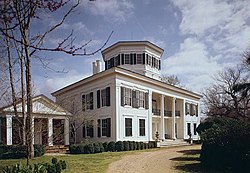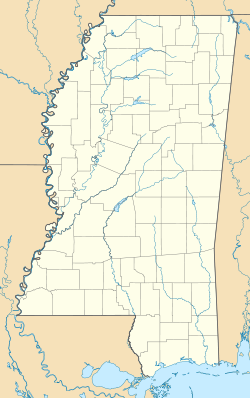Waverley (West Point, Mississippi)
|
Waverley
|
|

Waverley in 1975
|
|
| Nearest city | West Point, Mississippi |
|---|---|
| Coordinates | 33°34′9″N 88°30′13″W / 33.56917°N 88.50361°WCoordinates: 33°34′9″N 88°30′13″W / 33.56917°N 88.50361°W |
| Built | 1840 |
| Architect | Multiple |
| Architectural style | Octagon Mode |
| NRHP Reference # | 73001004 |
| Significant dates | |
| Added to NRHP | September 20, 1973 |
| Designated NHL | May 30, 1974 |
Waverley is a mansion, formerly a plantation house, in Clay County, Mississippi, ten miles east of West Point.
It was declared a National Historic Landmark in 1973. A statement at that time by the National Park Service read:
Begun in the 1840s and completed in 1852, Waverley is distinguished by the immense octagonal rotunda which projects through the roof as a cupola. This structure combines ornament and technology in the tradition of Jefferson: the varied decorative treatment of each room is artistic and the lighting system, using gas manufactured on the site, was scientific.
The antebellum home was originally owned by George Hampton Young, a colonel from Georgia. From its accepted date of completion in 1852, the Waverley Plantation was a self-sustaining community, complete with gardens, orchards and livestock. It maintained a brick kiln, cotton gin, ice house and swimming pool with a bathhouse. Gas for the chandeliers was produced by burning pine knots in a retort. In later years, Waverley had its own lumber mill, leather tannery and hat manufacturing operation. It is believed that the first American-made saddle blankets were produced at Waverley and the first fox hunt association was formed in the mansion's library in 1893. The mansion fell into disrepair following the end of the Young family line in 1913, but was restored by the Robert Snow family beginning in 1962.
The house is open for tours daily.
museums in Mississippi]]
...
Wikipedia


